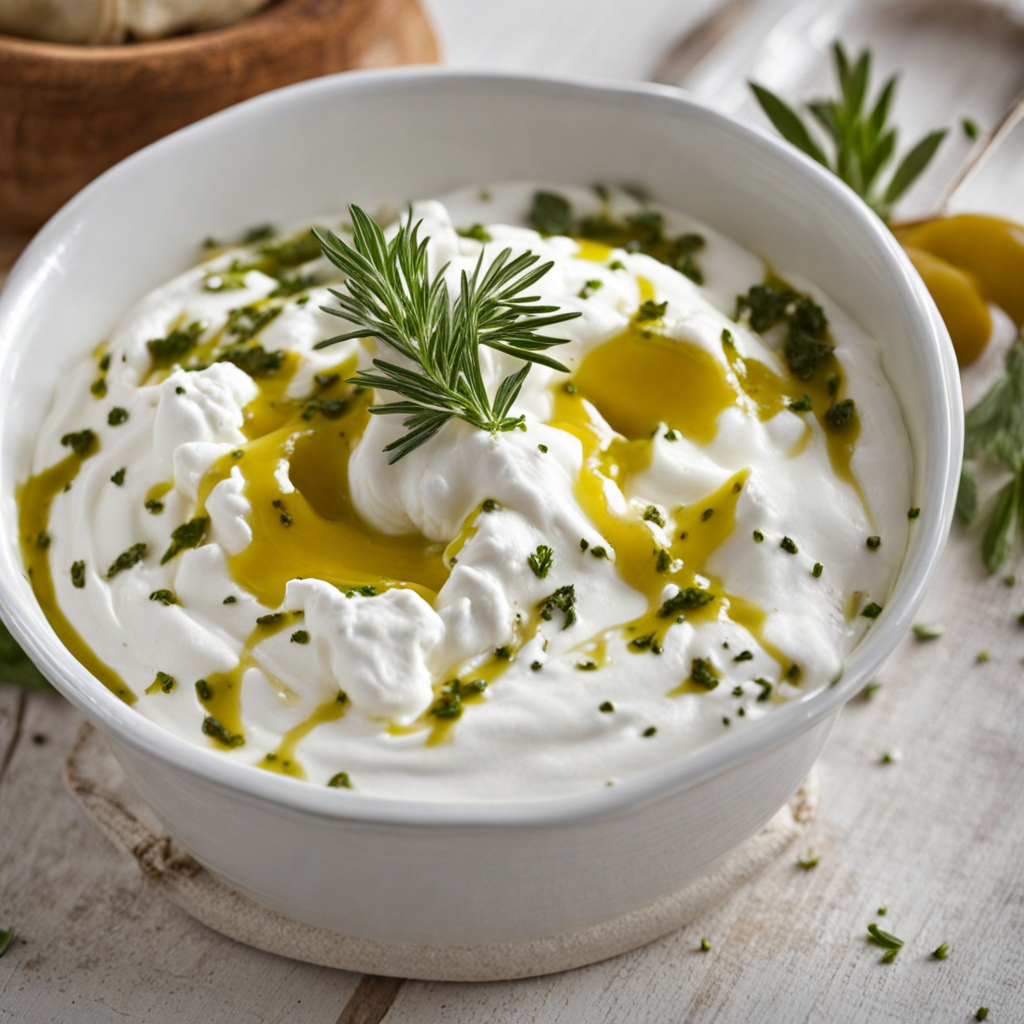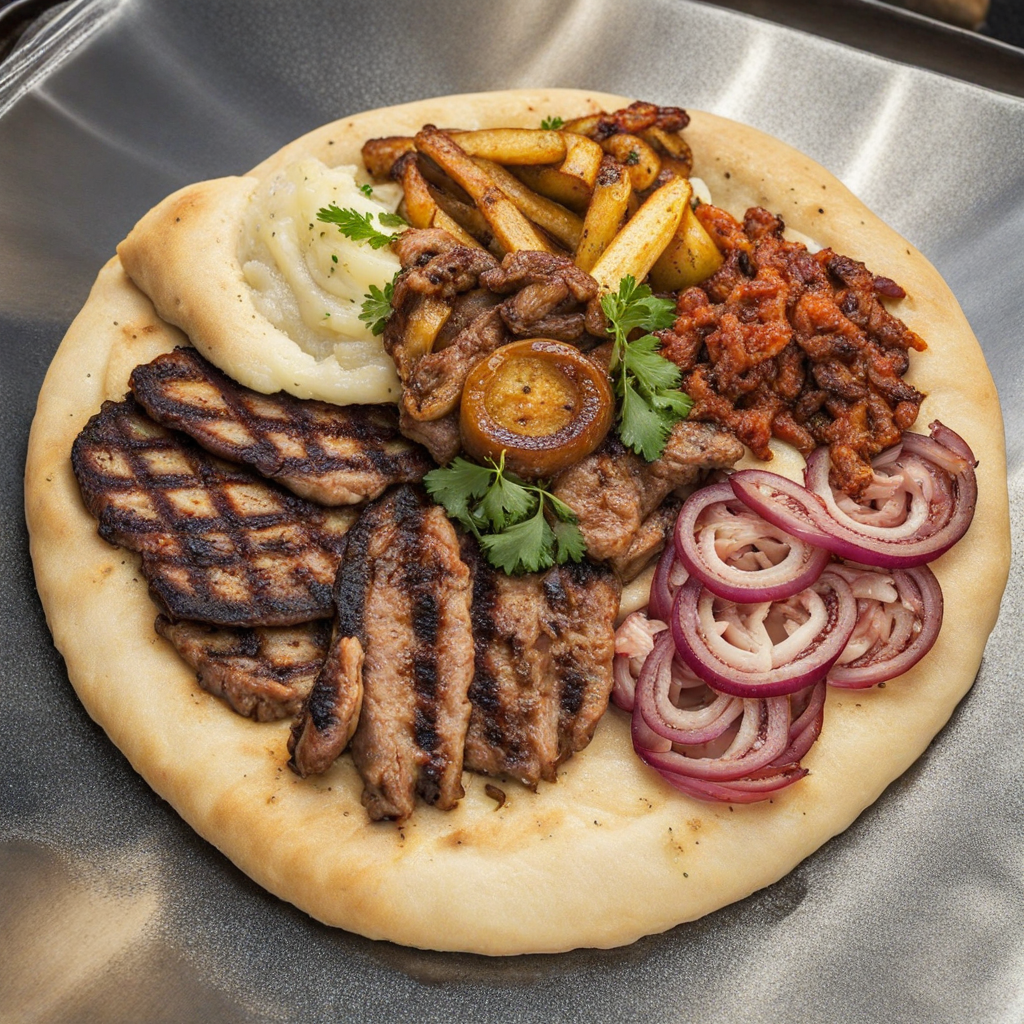Shakshuka
Shakshuka is a vibrant and flavorful dish hailing from the Middle East, particularly popular in Israel. At its core, it features perfectly poached eggs nestled in a rich and spicy tomato sauce. This sauce is typically made from a sautéed mixture of fresh tomatoes, bell peppers, onions, and a medley of spices such as cumin, paprika, and chili powder, giving it a warm and aromatic profile. The tomatoes are often simmered until they break down into a thick, luscious sauce that envelops the eggs, creating a comforting and satisfying meal that is both hearty and healthy. One of the most delightful aspects of Shakshuka is its versatility. While the classic version is beloved, it can be adapted to include various ingredients such as feta cheese, spinach, or even spicy sausage, allowing each cook to put their unique spin on the dish. Traditionally served in a cast-iron skillet, Shakshuka is often accompanied by warm, crusty bread that is perfect for dipping into the saucy goodness, making it a communal meal meant to be shared and enjoyed together. The dish is not only filling but also visually striking, with its vibrant red sauce contrasting against the perfectly cooked, sunny-side-up eggs. Shakshuka is typically enjoyed for breakfast or brunch, but its delightful flavors make it a suitable option for any meal of the day. The combination of savory spices, fresh ingredients, and the soft texture of the eggs creates a harmonious balance that excites the palate. As you take your first bite, the warmth of the spices mingles with the richness of the eggs, creating a truly memorable tasting experience that transports you to the bustling streets of Israel. Whether you’re discovering it for the first time or revisiting a beloved dish, Shakshuka is sure to leave a lasting impression.
How It Became This Dish
Origin and Early History The dish known as שקשוקה (shakshuka) has a rich and diverse history that traces its roots to North Africa, particularly in Tunisia and Algeria. The word "shakshuka" itself is derived from the Arabic term meaning "a mixture," which aptly describes the dish's composition of eggs poached in a spicy tomato sauce. While its precise origins are difficult to pinpoint, many food historians believe that shakshuka was introduced to Israel by Jewish immigrants from North Africa in the early 20th century, who brought their culinary traditions with them to the burgeoning Jewish settlements. The dish is thought to have evolved from similar egg dishes found in Mediterranean cuisine, where eggs are commonly cooked in various sauces. Variations of shakshuka can be found in other regions, such as the Middle East, where it has been embraced and adapted to local tastes. Recipes for shakshuka often include ingredients like bell peppers, onions, and a variety of spices, reflecting the flavors of North African cuisine. Cultural Significance Shakshuka quickly gained popularity in Israel, becoming a beloved part of the country’s culinary landscape. It is traditionally served for breakfast or brunch, often accompanied by crusty bread for dipping. This communal dish embodies the spirit of sharing and hospitality, as it is typically prepared in a single skillet and served straight from the stove. The vibrant colors and fragrant spices not only make it visually appealing but also evoke a sense of warmth and comfort, making it a staple in many households. The dish also holds cultural significance as it reflects the melting pot of Jewish communities in Israel. With its North African roots, shakshuka represents a connection to the Jewish diaspora, particularly the Sephardic and Mizrahi Jewish communities. Over time, it has transcended its origins to become a symbol of Israeli cuisine, enjoyed by people from various backgrounds and cultures. Development Over Time As Israel developed as a nation, so too did the culinary landscape, with shakshuka adapting to the tastes and preferences of a more diverse population. In the mid-20th century, with the influx of Jewish immigrants from different parts of the world, shakshuka began to absorb new influences. For instance, the addition of spices like cumin and paprika, as well as the use of fresh herbs such as parsley and cilantro, became popular enhancements that enriched the dish's flavor profile. The rise of the farm-to-table movement in Israel in the late 20th century also contributed to the evolution of shakshuka. With an emphasis on fresh ingredients, many chefs began to experiment with local produce, incorporating seasonal vegetables and herbs into the dish. This shift not only elevated the dish's taste but also aligned it with a growing appreciation for sustainable and locally sourced food. Modern Variations Today, shakshuka is enjoyed in various forms throughout Israel and beyond. While the classic version remains a favorite, chefs and home cooks alike have embraced creativity, leading to an array of innovative variations. Some modern interpretations include the addition of feta cheese, spicy harissa, or even ingredients like kale and sweet potatoes. There are also variations that incorporate meats, such as sausages or ground lamb, catering to diverse palates and dietary preferences. The dish has also found its way onto the menus of trendy cafes and restaurants, both in Israel and in cities worldwide. Shakshuka has been embraced by food enthusiasts and has become a popular brunch item in many Western countries, often served in a cast-iron skillet to maintain its warmth and rustic charm. Its newfound popularity in international culinary scenes has contributed to a greater awareness and appreciation of Middle Eastern cuisine. Shakshuka in Popular Culture Beyond its culinary appeal, shakshuka has made its mark in popular culture. It has been featured in numerous cookbooks, food blogs, and television shows, further solidifying its status as an iconic dish. The vibrant imagery of shakshuka, with its bright red sauce and perfectly poached eggs, has made it a favorite subject for food photography, often shared on social media platforms, where it garners attention and admiration. In Israel, shakshuka is not just a meal; it has become a cultural phenomenon. It symbolizes the fusion of different culinary traditions and the shared experiences of people living in a diverse society. Festivals and food fairs often showcase shakshuka, celebrating its history and significance while allowing chefs to present their unique takes on the dish. Conclusion The journey of shakshuka from its North African origins to its place as a beloved staple in Israeli cuisine is a testament to the power of food as a cultural connector. It embodies the stories of migration, adaptation, and the blending of diverse culinary traditions. As shakshuka continues to evolve and inspire new generations of cooks, it remains a delicious and comforting reminder of the rich tapestry of flavors that define Israeli food culture. Whether enjoyed at a bustling brunch spot or a quiet family gathering, shakshuka's enduring appeal is a celebration of community, tradition, and the joy of sharing a meal.
You may like
Discover local flavors from Israel







